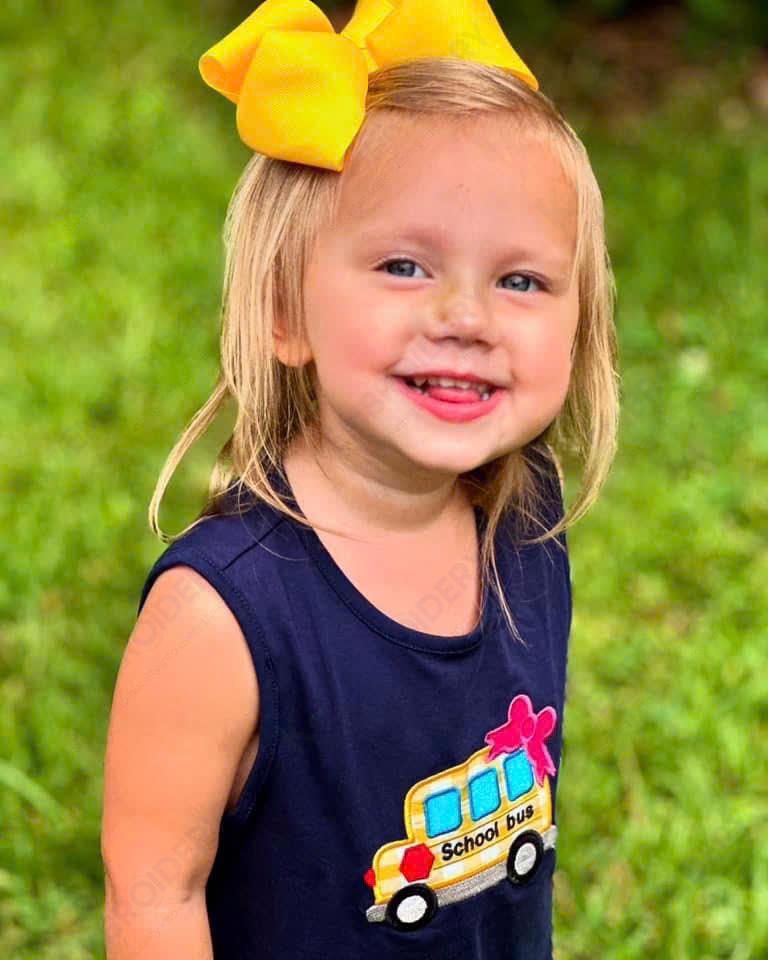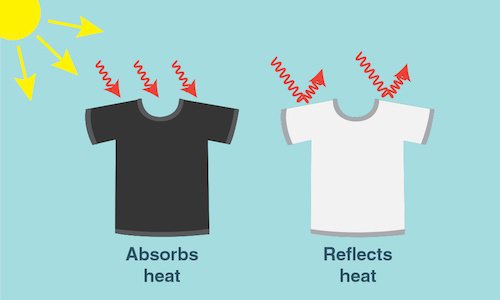Should Your Baby Wear Bright Or Dark Clothes In The Summer?
Recently, there has been controversy about whether babies should be dressed in light or dark clothes in this hot summer. That will be even more important and concerning if your family lives in Southeast Asia – where temperatures reach above 45 degrees Celsius.
And if you still think that only the fabric is important when wearing in the summer, you are wrong. Color is also an important factor to consider when choosing summer clothes for your baby. So, let’s delve into this debate and find out whether you should dress your baby in bright or dark clothes.

The Debate: Wear Bright Or Dark Clothes In the Summer?
We all know that white shirts absorb less heat than black shirts. But there was a question that people asked in a magazine article in 1980: “Why do people living in the Sinai Desert in northeastern Egypt wear black clothes often wear black clothes, not white?“
Even though it goes against what we know before, but wait, let’s listen to some analysis below about why people living in that desert often wear black clothes.
- White or light colored clothes and coats do absorb less heat than black clothes, this is true, but only when there is no or little wind. When the wind blows, white clothes will radiate more heat to the outside environment. And our body is also a source of heat, with a body temperature of 37 degrees Celsius. At that time, white clothes will also radiate heat from the body to the environment, making our skin always warm and not cool.
White overalls and gowns are still used, but are preferred for light or low-intensity activities. On the contrary, for people who move frequently at high speeds under the sun (like riding horses or camels), they often choose black clothes. Black radiates more heat and absorbs less heat from the human body, helping them feel more comfortable in tropical environments.
- In addition, the cloaks of people living in desert areas are often designed to be spacious, helping to create the phenomenon of air convection in the environment. When moving, cooler air from outside will flow into the cloak, carrying heat and cooling the body.
- An unexpected reason is that in desert areas, with large amounts of wind and dust, people often believe that black clothes will stay clean longer than white.

So Should You Wear Your Baby Dark Clothes In the Summer?
No, absolutely not. In the summer, it’s generally recommended to dress your baby in bright clothes. Bright colors like whites, pastels, or light shades help reflect sunlight and keep your baby cooler. Dark clothes, on the other hand, tend to absorb more heat from the sun and can make your baby feel hotter. So, opt for bright and light-colored outfits to help your baby stay comfortable during the summer season.
|
That’s why all products at K-Embroidery are designed in bright colors. Not only are they eye-catching and make your little one stand out in the crowd, but when combined with 100% cotton, they also ensure your baby feels comfortable even in this scorching 45-degree Celsius weather. May so you like: Smocked baby clothes wholesale |
However, dark-colored clothes can be beneficial when riding a motorbike or in windy areas. In those situations, the wind will carry away the absorbed heat from the clothes, creating a cool airflow for your baby.
Some Tips to Keep In Mind When Dressing Your Baby In The Summer
When dressing your baby in the summer, it’s important to keep them comfortable and protected from the heat. Here are some tips to help you dress your baby appropriately during the warmer months:
- Choose lightweight and breathable fabrics (cotton, linen) that allow air circulation and wick away moisture from your baby’s skin. These materials help keep your baby cool and prevent overheating.
- Remember: Less is more – The fewer layers of clothing you put on your baby, the more comfortable he or she will be.
- Protect your baby’s delicate skin and eyes from the sun by using a wide-brimmed hat. This will provide shade and help prevent sunburn.
- Wear loose-fitting clothes which allow air to circulate around your baby’s body, keeping them cool. Avoid tight or restrictive clothing that can cause discomfort and increase the risk of overheating.
- If your baby is older than six months, apply sunscreen to exposed skin areas. Choose a broad-spectrum sunscreen with a high SPF and apply it generously. Remember to reapply every two hours or as directed on the product label.
- Ensure your baby stays hydrated by offering them breast milk, formula, or water frequently, especially in hot weather.
Conclusion
In conclusion, dressing your baby in bright clothes during the summer brings several benefits. Bright colors reflect sunlight, helping to keep your baby cooler. Additionally, they make it easier to spot your baby in crowded places and provide a cheerful and vibrant look.
If you haven’t purchased anything for your baby’s wardrobe yet, please contact our sales team on WhatsApp at +84 85 555 5961. We are more than happy to assist you and provide guidance.

FAQs
Do babies need warm clothes in summer?
While it may seem like a good idea to keep your baby warm by dressing them in layers, it’s important to note that overheating increases the risk of SIDS (Sudden Infant Death Syndrome). Research suggests that it’s better for babies to be cooler rather than too hot during the summer months.
Is it better to wear light or dark clothes in the sun?
A study carried out in Spain discovered that fabrics in darker or more intense colors generally provide better protection against UV radiation compared to lighter colors. Among all the colors tested, dark blue offered the highest level of UV protection, making it the ideal color to wear in the sun.
Which color of clothes should you avoid wearing during summer?
According to fashion designer Jaime King, it’s best to avoid wearing dark-colored fabrics and natural fibers like wool, silk, and cashmere on hot days. These materials have a tendency to trap heat and moisture, making them less suitable for warmer temperatures.


